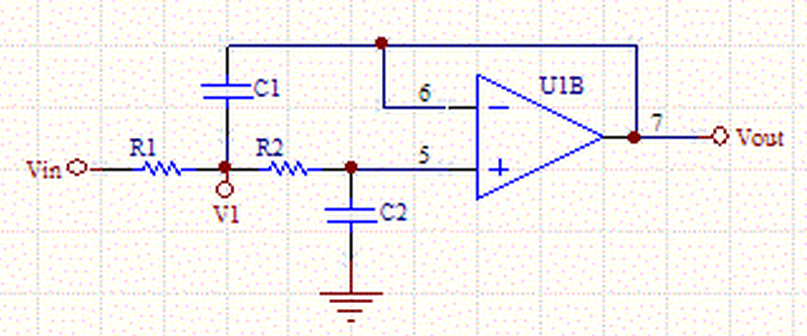

Then change the Implementation from "Sallen Key" to "Multiple Feedback". But you can use many other op amps if you use the Multiple Feedback configuration instead. Once you are in the components screen, the tool will automatically pick a very fast op amp in the Sallen Key configuration. Step 2: Then change to multiple feedback. This will allow you to go to the components screen without error. You can do this by lowering the stopband requirement to 60 kHz. You need to get the tool to generate this, without checking for -80 dB attenuation at such high frequencies. You can see in the specifications screen that your design requirements result in a 2nd order filter. Step 1: First avoid the error in the components screen. There are plenty of op amps that can handle your design requirements in the Multiple Feedback configuration. The filter tool should be automatically switching over to the Multiple Feedback topology in this situation, or at least give you the option to do so when you're getting the error. So when needing to design a filter with really deep attenuation from one stage, that's the better topology. There is another topology that is available in the Filter Wizard: the multiple feedback, which does not have this issue. Unfortunately once the tool can't find a solution, it errors out, and you can't do anything in the components screen. This requires an op amp with 100's of MHz of GBW, maybe even a GHz, and we run out of options in our portfolio. So in your case, the tool is trying to find an op amp that can provide -80dB attenuation at 8 MHz. I think it may check to 100x the stopband frequency. In the previous article we saw that a pulse-width-modulated signal can be smoothed into a fairly stable voltage ranging from ground to logic high (e.g., 3.3 V) the smoothing is accomplished by a simple low-pass filter. The filter wizard checks for the upturn at higher frequencies and rules out amplifiers that can't meet the attenuation requirements. 2nd order stage + 1st order stage) also don't have this issue. 1st order filters also don't have this issue, so 3rd order filters (i.e. For example in a 4th order filter, the attenuation gets spread across two stages, so for -80dB attenuation, each stage only has to provide -40dB attenuation. This issue is the worst for filters with only one stage. So for example if desired attenuation is -80dB, only 1/10000th of the signal needs to go around the op amp for it not to reach this design goal. This is because a small amount of the input signal goes around the op amp through the passive network rather than through it. This topology has several good properties, but a major drawback of this topology is that attenuation degrades at high frequencies. We use the Sallen Key filter circuit topology as our default.


 0 kommentar(er)
0 kommentar(er)
